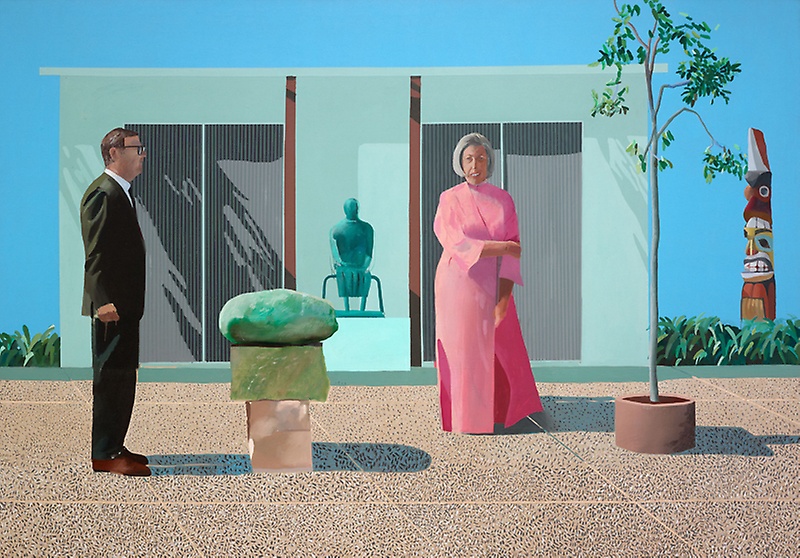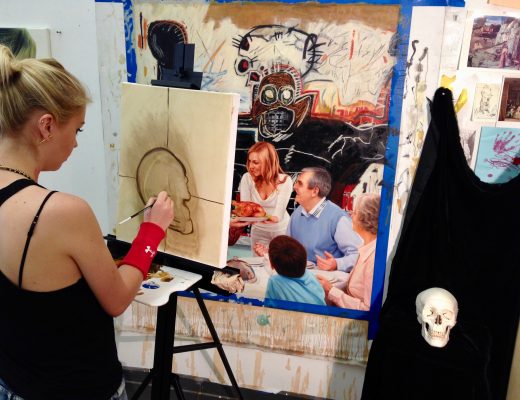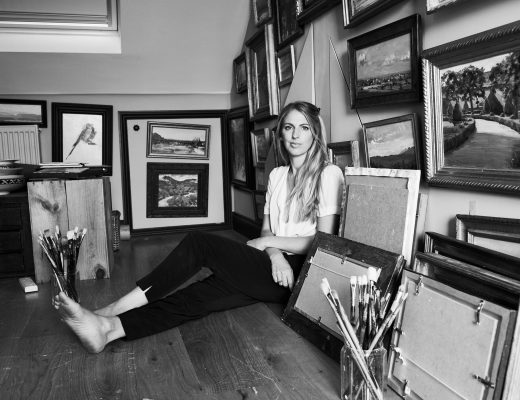Metropolitan Museum of Art, New York.
After a particularly fortuitous astrological alignment, we have finally made it to the David Hockney retrospective at the Metropolitan Museum of Art in New York, after having missed it in both London and Paris. The retrospective has been organized in conjunction with the Tate and the Pompidou, and will be on view in New York until February the 25th, 2018. This exhibit is a major retrospective for the octogenarian artist, spanning some sixty odd productive years. Hockney is best known for being a major figure of the British pop art movement of the 1960’s and for his iconic imagery of poolside Los Angeles best encapsulated in the 1967 work the Bigger Splash (the keystone piece of the exhibit). The retrospective itself is divided into a series of rooms offering comprehensive groupings of Hockney’s oeuvre that leave visitors with a keen sense of Hockney’s fearless engagement with both his materials and his responses to wider art history.
The exhibition begins chronologically with two rooms devoted to Hockney’s student days, ranging from the late 1950’s through to the early 1960’s. Hockney was already making splashes (you’ll forgive the pun) at the Royal College of Arts in London for bending rules (refusing to write essay exams for example; making the rather fair point that his medium was painting not word-smithing) and for actively engaging with his sexuality through his artwork (homosexuality was decriminalized in the United Kingdom by the Sexual Offenses Act of 1967). These early works draw inspiration from a diversity of source material but notably from Francis Bacon, both methodologically and topically. Hockney establishes early on that his true passion as an artist lies in the figural and landscape genres, running contra to the prevailing trend of the day for abstract expressionism. Where some artists of the era were marginalized for not embracing abstract expressionism as a doctrine, Hockney found a way to balance his more classical impulses and present them in an engaging way that resonated to a modern audience.
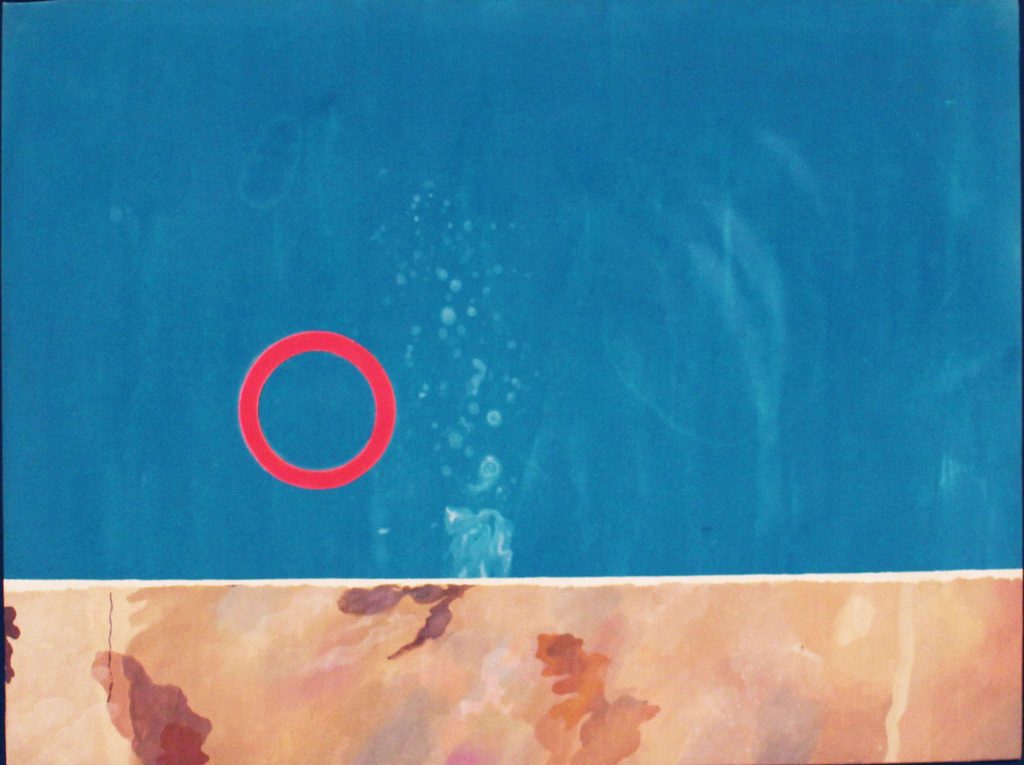
David Hockney, Rubber Ring in a Swimming Pool, 1971. Acrylic on Canvas.
We see this clearly in the third room of the exhibition, where diluted layers of acrylic ripples on swimming pools walk the thin line between abstraction and representation to evoke the iconic plasticity of Los Angeles. Leaving aside A Bigger Splash, we note less recognizable works such as Rubber Ring in a Swimming Pool. Hockney indicated that without the point of reference of the title, this work can be considered wholly abstract, and dreamily tells us the scene reminds him of Max Ernst. There is something equally wonderful and cinematic about pieces like Lawn Sprinkler and Savings and Loan Building that are able to imbue drama into such static frames. Indeed this sense of static drama is present throughout Hockney’s work if we consider his Play Within a Play, a portrait of his art dealer John Kasmin inspired by frescos attributed to 17th century Italian baroque master Domenichino. These Domenichino frescos served as a conceptual inspiration for Hockney, painted to look like tapestries adorning the walls. This double-reality (inception) led Hockney to do the same in his portrait pressing his rather harangued looking gallerist in between a hyper-flattened periwinkle tapestry and in a Baconian fashion, a layer of Plexiglas. Bacon notably included layers of glass in many of his works to add a distortive element to the composition, here Hockney’s diluted and dry paint treatment is subtle enough that in fact even a trained eye does not immediately spot the seam of the glass entrapping Mr. Kasmin.
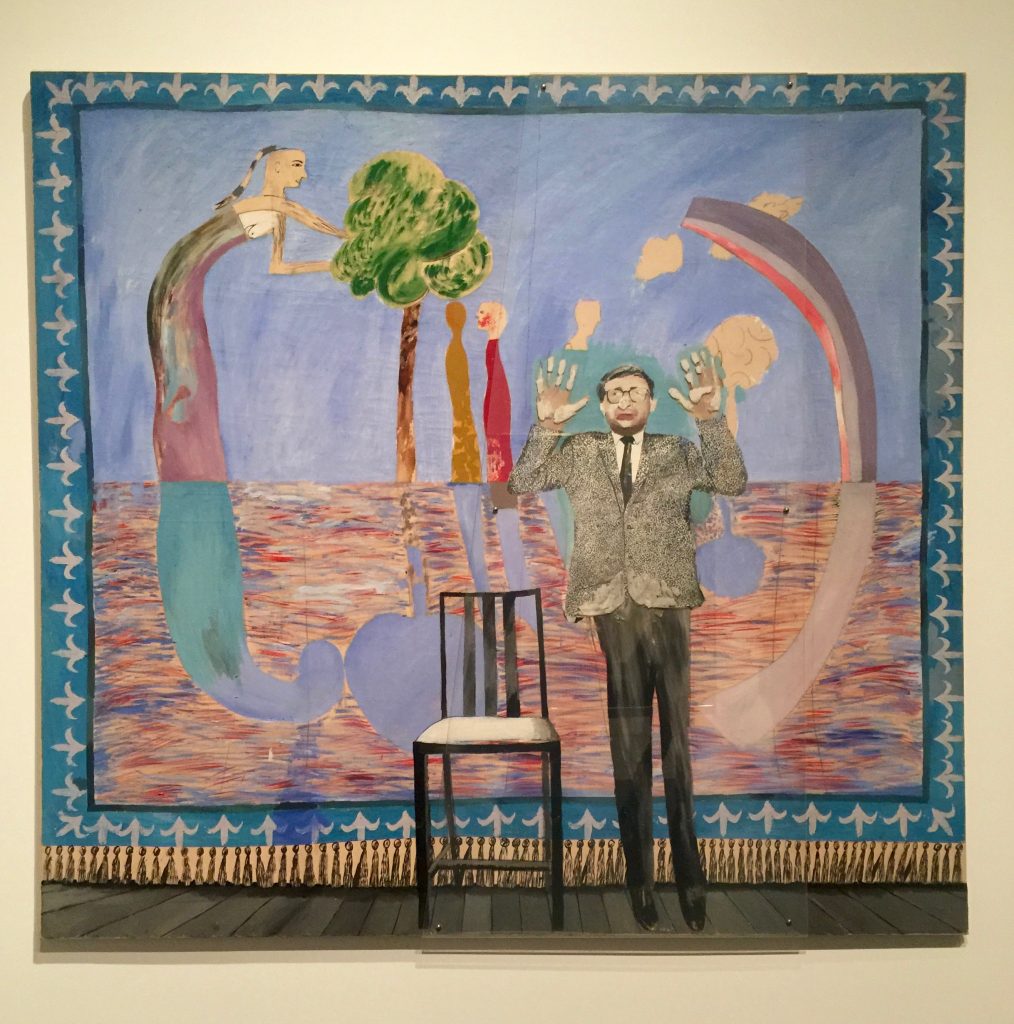
David Hockney, Play Within A Play, 1963. Oil and Plexiglass on Canvas.
Moving past the swimming pools, the exhibition proceeds with a room of beautiful double portraits that represent a mature and refined Hockney, these works continue to display Hockney’s interest in using geometry as a staging device to create psychological energy. They are primarily portraits of Hockney’s social circle. We are particularly drawn to the portrait of Fred and Marcia Weisman in American Collectors. We see them here in Hockney’s portrait having a super chic palm spring moment looking as artful as their collection and home. For those of you in the Los Angeles area, the couple’s rather fabulous Holmby Hills home makes for an interesting afternoon outing. There is also within the same set of double portraits, a lovely depiction of groovy designer Ossie Clark and his wife Celia Birtwell, and their cat Percy (loathe to be excluded it seems). From double portraiture we abruptly depart to engage with photography, collages and cubism. We confess it took us a moment to recalibrate to these offerings from the 1980’s. We take Hockney’s point, however; that photography is an excellent medium for cubist exploration as we consider My Mother, Bolton Abbey, Yorkshire, Nov. Photography allows for the compositing of various angles to be worked into an overall super structure. We also love Yorkshire. Our adventures with Hockney close with the winding landscapes in bright synthetic colours, representing the artists most recent work. Hockney continues to be active, and this retrospective is a delightful ode to his career, one we hope has many more years still to unfold.
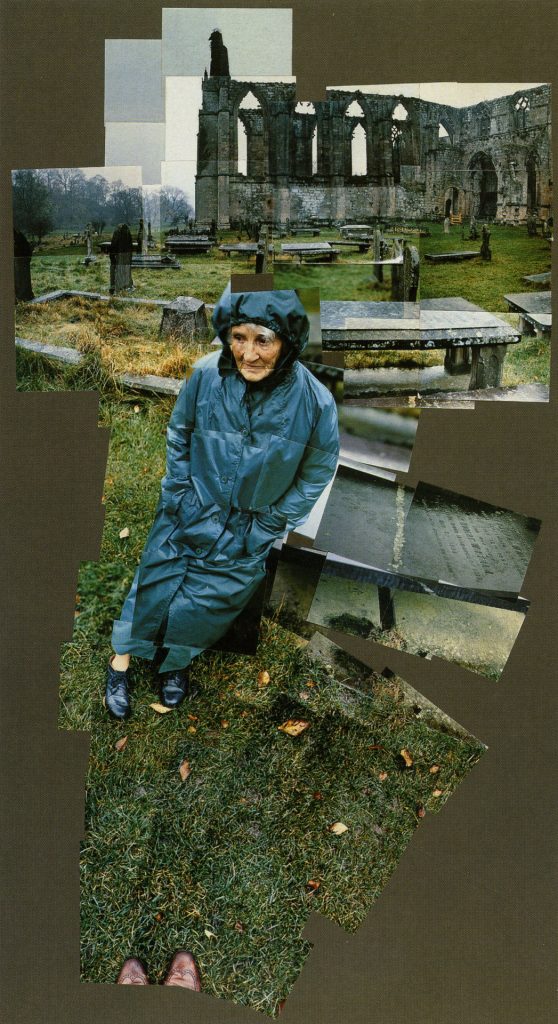
David Hockney. My Mother, Bolton Abbey, Yorkshire, Nov. 1982. Photographic Collage.

